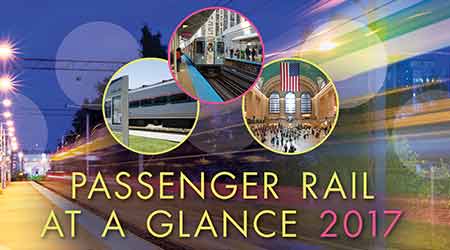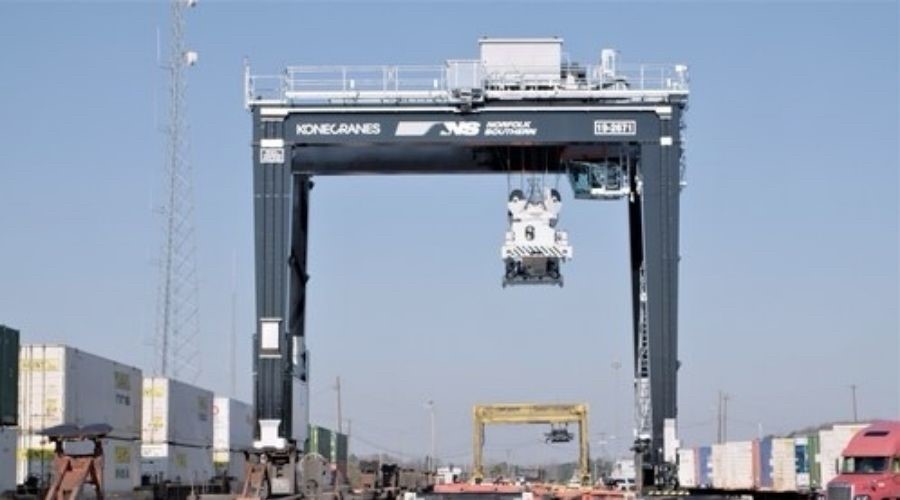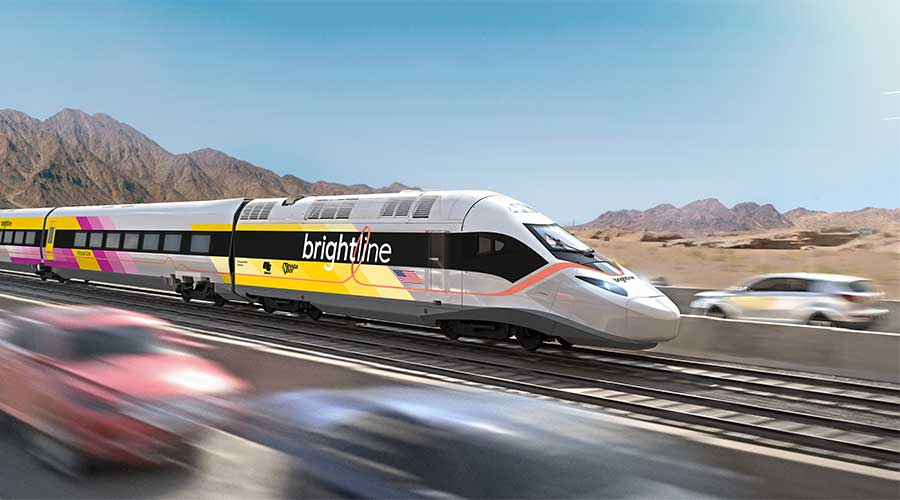Stay updated on news, articles and information for the rail industry
October 2017
Part 1 : Progressive Railroading's Passenger Rail at a Glance 2017: Preface
Part 2 : Progressive Railroading's Passenger Rail at a Glance 2017: Amtrak, California, & Colorado
Part 4 : Progressive Railroading's Passenger Rail at a Glance 2017: New Jersey, New York, & Ohio
Part 5 : Progressive Railroading's Passenger Rail at a Glance 2017: Pennsylvania, Texas, & Washington
Rail News: Passenger RailProgressive Railroading's Passenger Rail at a Glance 2017: Pennsylvania, Texas, & Washington

PENNSYLVANIA
Southeastern Pennsylvania Transportation Authority
Operating budget: $1.4 billion
The Southeastern Pennsylvania Transportation Authority (SEPTA) is the nation’s sixth largest public transportation system with an extensive network of fixed route services that include subway, trolley, high-speed and regional rail. The agency’s service region includes the Pennsylvania counties of Philadelphia, Bucks, Chester, Delaware, and Montgomery and extends to Trenton, N.J., and Newark, Del. SEPTA is one of the region’s largest employers with a workforce of more than 9,000 employees.
Service launched: Light rail, 1969; heavy rail, 1968; commuter rail, 1983
Miles per mode: light rail, 42; heavy rail, 47; commuter rail, 280
Rolling stock: 8 locomotives, average age 27 years; 404 rail cars, average age 29 years; 167 light-rail vehicles, average age 33 years
Cars/locomotives on order: 13 Siemens locomotives; expected delivery 2018
Annual ridership: light rail, 27.1 million; heavy rail, 97.8 million; commuter rail, 37.7 million
Annual Operating budget: $1.4 billion (FY2018)*
Annual capital budget: $727.23 million (proposed FY2018)*
Stations: light rail, 49; heavy rail, 75; commuter rail, 154
Major capital improvement projects:
• Media/Sharon Hill Line signal improvements. SEPTA has designed a new signal system for the Media/Sharon Hill suburban light-rail lines, which operate in Delaware County. Early action items for this project included the reconfiguration and relocation of a major interlocking and installation of new support structures for the overhead contact system. The next phase of construction, which will include signal improvements, will begin in 2018.
• University City area infrastructure program. SEPTA has designed a series of infrastructure improvements near the University City Station. The project includes replacement of 80-year-old catenary, construction or rehabilitation of four interlockings, retiring an interlocking, tie and surface renewal, and signal improvements in an area adjacent to the Northeast Corridor. These improvements will impact service on SEPTA’s Airport, Wilmington, and Media lines, and will be constructed between 2017 and 2020.
• Elwyn to Wawa service restoration. SEPTA will restore revenue service on the Media-Elwyn Regional Railroad Line from its current terminus at Elwyn Station to Wawa, Delaware County, Pa. (Service beyond Elwyn was discontinued in the 1980s.) An early action phase to stabilize embankments on sections of this line was completed in 2010. The next component of this 3-mile service restoration will involve significant infrastructure renewal, including retaining walls, the rehabilitation or replacement of 9 bridges, and the replacement of track, catenary and structures and signals. The project’s last component is the construction of a new station, a 600-car parking deck, and an intermodal connection.
*Information source: septa.org
TEXAS
Capital Metropolitan Transportation Authority
Operating budget: $9.8 million
CMTA is the regional public transportation provider of Austin. The agency owns the Capital Metro Railroad, which consists of 162 miles of mainline track between Giddings and Llano; and operates the Metrorail commuter-rail service, a 32-mile line between Leander and downtown Austin.
Established: 1985 by voter referendum
Miles: 60, heavy rail; 32, commuter rail
Rolling stock: 10 DMU locomotives, average age 5 years
Annual ridership: 333,000 commuter
Annual operating cost: $9.8 million
Annual capital cost: NA
Stations: NA
Major capital improvement projects: positive train control; commuter operation risk reduction; Central Subdivision electric locks; Central Subdivision quiet zone commuter; Metro Drive pre-emption; East Subdivision quiet zone freight; 4 new diesel multiple units (DMUs); engineering for existing DMUs; rail vehicle engineering and commissioning support; Nearside crossing gate downtime reduction; private crossing signalization; rail drainage improvement (study); rail replacement; upgrade 28 bridges; timber and surface; high-wide and flood detectors; Interstate 35 crossings improvements reimbursed by Texas DOT; Elgin, Liberty Hill crossing improvements reimbursed by TxDOT; crossing gate mechanism.
Dallas Area Rapid Transit
Operating budget: $113.87 million
Dallas Area Rapid Transit (DART) is the transit provider for Dallas and 12 other North Texas cities. It operates light-rail, bus and paratransit services. It co-owns the Trinity Railway Express commuter rail with the Fort Worth Transportation Authority.
Service launched: 1996 (light and commuter rail)
Miles per mode: Light rail, 93; commuter rail, 34
Rolling stock: 163 light-rail vehicles
Annual ridership: 29.76 million (FY2016)
Annual operating cost: $113.87 million (FY2016)
Annual capital cost: $87.62 million (FY2016)
Stations: 64
Major capital improvement projects underway: DART is in the design stage of a second light-rail alignment through downtown Dallas. DART also is in the early design stages of a new commuter-rail line operating on the Cotton Belt Corridor in the northern section of the service area. When completed, this would connect DART customers with three light-rail lines and an additional rail stop at Dallas/Fort Worth Airport.
Denton County Transportation Authority
Operating budget: $12 million
Denton County Transportation Authority (DCTA) is a public transportation agency in North Texas that operates the A-Train commuter-rail service.
Service operated: 6 years
Miles: 21.3
Rolling stock: 11 rail cars, average 6 years
Annual ridership: 545,000
Annual operating cost: $12 million
Annual capital cost: $2 million
Stations: 6
Metropolitan Transit Authority of Harris County
Operating budget: $35 million
The Metropolitan Transit Authority of Harris County (METRO) is the Houston region’s largest public transit provider. METRO operates more than 1,400 buses and approximately 23 miles of light rail.
Service launched: 2004, light rail
Route Miles: 23, light rail
Rolling stock: 76 light-rail vehicles, average age 6 years
Annual ridership: 18.5 million (2016)
Annual operating cost: $35.2 million
Annual capital cost: $7.2 million
Stations: 44
Trinity Railway Express
Operating budget: $24.6 million
The Trinity Railway Express (TRE) is jointly owned by Dallas Area Rapid Transit and the Fort Worth Transportation Authority. It is a 34-mile long commuter-rail line linking the downtowns of Dallas and Fort Worth.
Service launched: 1996
Miles: 34
Rolling stock: 9 locomotives, average age 23 years; 25 rail cars — 17 bi-level coaches, average age 13 years, and 8 bi-level cab cars, average age 29 years
Annual ridership: 2 million (FY2017)
Annual operating cost: $24.6 million (FY2017)
Annual capital cost: $7 million general MOW (FY2017)
Stations: 10
Major capital projects in the works:
TRE’s Valley View double track project includes construction of 1.5 miles of a second main line track in Irving, Texas. This project also includes the replacement on an existing single track bridge with a proposed double track bridge structure. TRE Bridge repairs at MP 640.4 replaces three timber spans with a single steel beam, concrete ballast deck structure. Estimated request for proposal to be issued in fall 2017.
WASHINGTON
Sound Transit
Operating budget: $407.1 million*
Sound Transit plans, builds and operates regional transit systems and services to improve mobility for Central Puget Sound.
Service launched: 2000
Route Miles: 20 (light rail)
Rolling stock: 14 locomotives, average age 16 years; 58 rail cars, average age 15 years; 62 light-rail vehicles, average age 11 years
Cars/locomotives on order: Nine Bombardier-manufactured cab cars expected for delivery by October; 152 Siemens-manufactured light-rail vehicles scheduled for delivery second-quarter 2019 through third-quarter 2024
Annual ridership: 19,121,621 light rail; 4,162,641 commuter rail
Annual cost per boarding: Calculated as the total actual operating costs, including agency overhead, before depreciation divided by the total number of riders — $4.21 for light rail, $10.58 for commuter rail
Projects budget: $1.3 billion (2017)*
Stations: 16, light rail; 12 commuter rail
Major capital projects in the works:
• Northgate light-rail extension — A $1.9 billion project, the Northgate Link Extension travels north from the University of Washington with two tunneled and one elevated station. Tunneling and cross-passages are complete; current work includes station construction, elevated guideway. Expected completion in 2021. Major contracts issued to Absher, M.A. Mortenson Construction Co.
• Lynnwood light-rail extension — A $2.9 billion project that continues light rail north of Northgate, crossing into Snohomish County. Project adds four stations and 8.5 miles to the system. Construction to begin in 2018.
• Federal Way light-rail extension — In final design, the extension continues light rail south from SeaTac to Federal Way on a 7.6-mile alignment with three stations. Construction to begin in 2018 and completed in 2024.
• Downtown Redmond light-rail extension — Light rail service would extend beyond the East Link extension to downtown Redmond on a 3.5-mile alignment with two stations. Project is in the planning stage with construction to begin in 2019.
• Tacoma Link extension — A separate light-rail line serving Tacoma. Now with six stations, the extension adds six more, connecting the Hilltop neighborhood to the Tacoma Dome Sounder commuter-rail station.
• West Seattle and Ballard neighborhood light-rail extensions — Projects continue light-rail west and northwest of downtown Seattle. The Ballard Link extension includes a new rail tunnel through downtown Seattle. The West Seattle Link adds 4.7 miles and three stations on a primarily elevated alignment. Project is in the initial start-up phase.
• Tacoma Dome light-rail extension — Continues light rail south from Federal Way, across the Pierce County line to the Tacoma Dome Station on a 9.7 mile alignment with four stations. Initial start-up phase begins this year.
• Eastside operations/maintenance facility — A $449 million facility in Bellevue to support light-rail expansion to east of Lake Washington. Project is in final design with completion slated for 2020. A major contract has been issued to Hensel Phelps.
*Information source: soundtransit.org


 2025 MOW Spending Report: Passenger-rail programs
2025 MOW Spending Report: Passenger-rail programs
 Gardner steps down as Amtrak CEO
Gardner steps down as Amtrak CEO
 Guest comment: Oliver Wyman’s David Hunt
Guest comment: Oliver Wyman’s David Hunt
 Women of Influence in Rail eBook
Women of Influence in Rail eBook
 railPrime
railPrime








